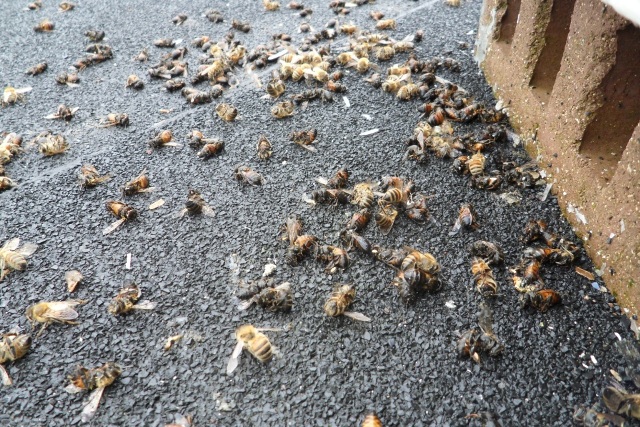21st Century Wire says…
The damage done by the industrial agro-chemical industry is officially out of control now.
Here are a series of shocking statements, based on the findings of America’s Union of Concerned Scientists:
“Today, the majority of American farmland is dominated by industrial agriculture—the system of chemically intensive food production developed in the decades after World War II, featuring enormous single-crop farms and animal production facilities. Back then, industrial agriculture was hailed as a technological triumph that would enable a skyrocketing world population to feed itself. Today, a growing chorus of agricultural experts—including farmers as well as scientists and policy makers—sees industrial agriculture as a dead end, a mistaken application to living systems of approaches better suited for making jet fighters and refrigerators. The impacts of industrial agriculture on the environment, public health, and rural communities make it an unsustainable way to grow our food over the long term. And better, science-based methods are available.”
“No matter what methods are used, agriculture always has some impact on the environment. But industrial agriculture is a special case: it damages the soil, water, and even the climate on an unprecedented scale.
Intensive monoculture depletes soil and leaves it vulnerable to erosion. Chemical fertilizer runoff and CAFO wastes add to global warming emissions and create oxygen-deprived “dead zones” at the mouths of major waterways. Herbicides and insecticides harm wildlife and can pose human health risks as well. Biodiversity in and near monoculture fields takes a hit, as populations of birds and beneficial insects decline.”
One of the great studies and published works on this subject is from author F. William Engdahl. Below is a detailed review of his important work on this subject…

(Image Source: The Tech Journal)
As F. William Engdahl wrote in “Death of the Birds and the Bees Across America“:
Birds and bees are something most of us take for granted as part of nature. The expression “teaching about the birds and the bees” to explain the process of human reproduction to young people is not an accidental expression. Bees and birds contribute to the essence of life on our planet. A study by the US Department of Agriculture estimated that “…perhaps one-third of our total diet is dependent, directly or indirectly, upon insect-pollinated plants.”[1]
The honey bee, Apis mellifera, is the most important pollinator of agricultural crops. Honey bees pollinate over 70 out of 100 crops that in turn provide 90% of the world’s food. They pollinate most fruits and vegetables — including apples, oranges, strawberries, onions and carrots.[2] But while managed honey bee populations have increased over the last 50 years, bee colony populations have decreased significantly in many European and North American nations. Simultaneously, crops that are dependent on insects for pollination have increased. The phenomenon has received the curious designation of Colony Collapse Disorder (CCD), implying it could be caused by any number of factors. Serious recent scientific studies however point to a major cause: use of new highly toxic systemic pesticides in agriculture since about 2004.
If governments in the EU, USA and other countries fail to impose a total ban on certain chemical insecticides, not only could bees become a thing of the past. The human species could face staggering new challenges merely to survive. The immediate threat comes from the widespread proliferation of commercial insecticides containing the highly-toxic chemical with the improbable name, neonicotinoids. Neonicotinoids are a group of insecticides chemically similar to nicotine. They act on the central nervous system of insects. But also on bees and small song birds. Recent evidence suggests they could also affect human brain development in newborn.
Some five to six years back, reports began to circulate from around the world, especially out of the United States, and then increasingly from around the EU, especially in the UK, that entire bee colonies were disappearing. Since 2004 over a million beehives have died across the United States and beekeepers in 25 states report what is called Colony Collapse Disorder. In winter of 2009 an estimated one fifth of bee hives in the UK were lost, double the natural rate.[3] Government authorities claimed it was a mystery. Continue reading “Death of the Birds and the Bees Across America” by F. William Engdahl
Today more than ever, the world’s food resources are being hijacked by giant corporations that are turning farms into factories and replacing natural resources with genetically modified “food-like” substances.
F. William Engdahl is a leading researcher on the destruction of the planet’s food system and the profit-driven enterprises that are driving this devastating process.
To learn more, pick up your copy of “Seeds of Destruction: The Hidden Agenda of Genetic Manipulation“, published by Global Research.

by F. William Engdahl
ISBN Number: 978-0-937147-2-2
Year: 2007
Pages: 341 pages with complete index
Global Research Price: US $18.00
(List price: US $25.95)
CLICK TO BUY
This skilfully researched book focuses on how a small socio-political American elite seeks to establish control over the very basis of human survival: the provision of our daily bread. “Control the food and you control the people.”
This is no ordinary book about the perils of GMO. Engdahl takes the reader inside the corridors of power, into the backrooms of the science labs, behind closed doors in the corporate boardrooms.
The author cogently reveals a diabolical world of profit-driven political intrigue, government corruption and coercion, where genetic manipulation and the patenting of life forms are used to gain worldwide control over food production. If the book often reads as a crime story, that should come as no surprise. For that is what it is.
Engdahl’s carefully argued critique goes far beyond the familiar controversies surrounding the practice of genetic modification as a scientific technique. The book is an eye-opener, a must-read for all those committed to the causes of social justice and world peace.
READ MORE GMO NEWS AT: 21st Century Wire GMO Files















